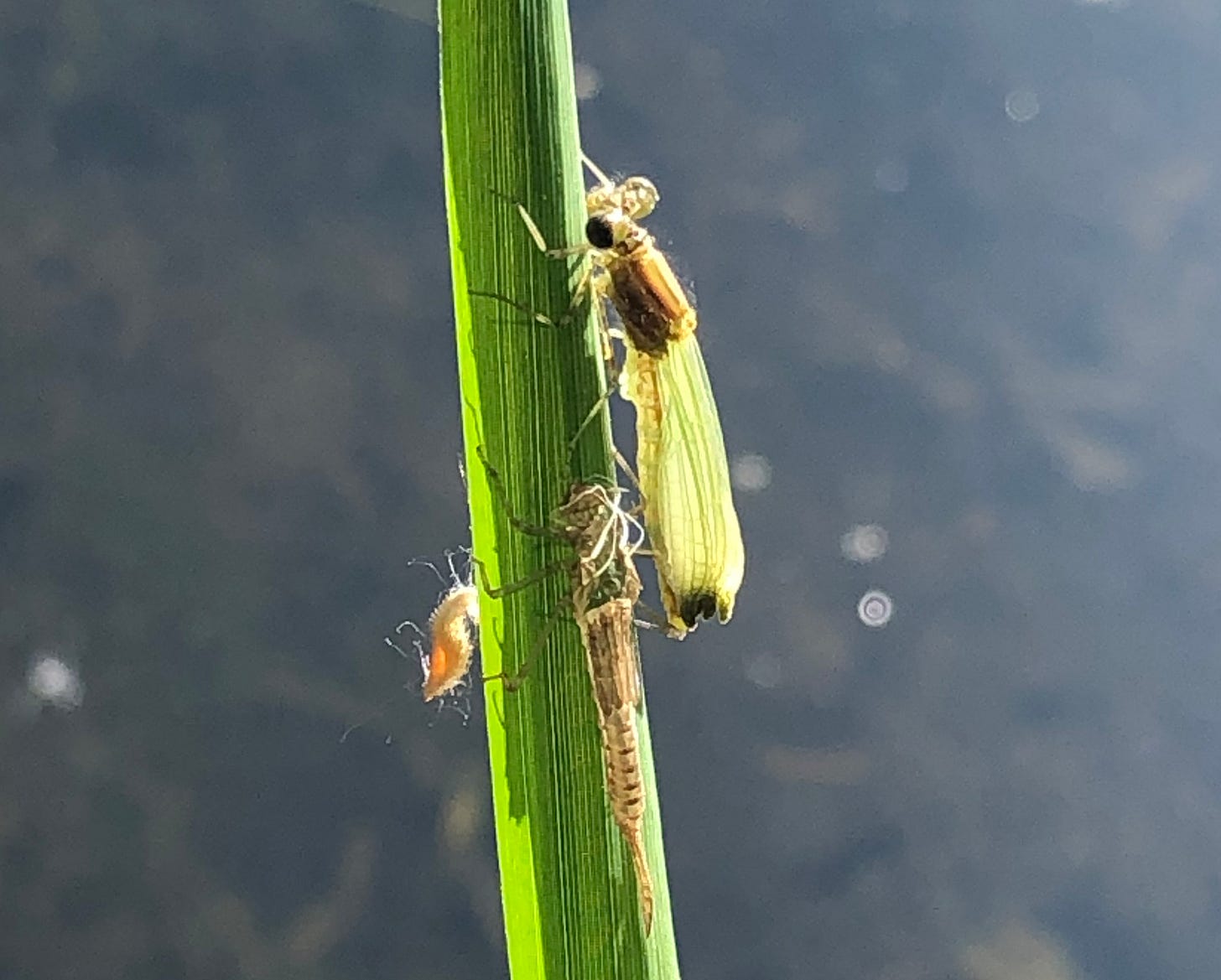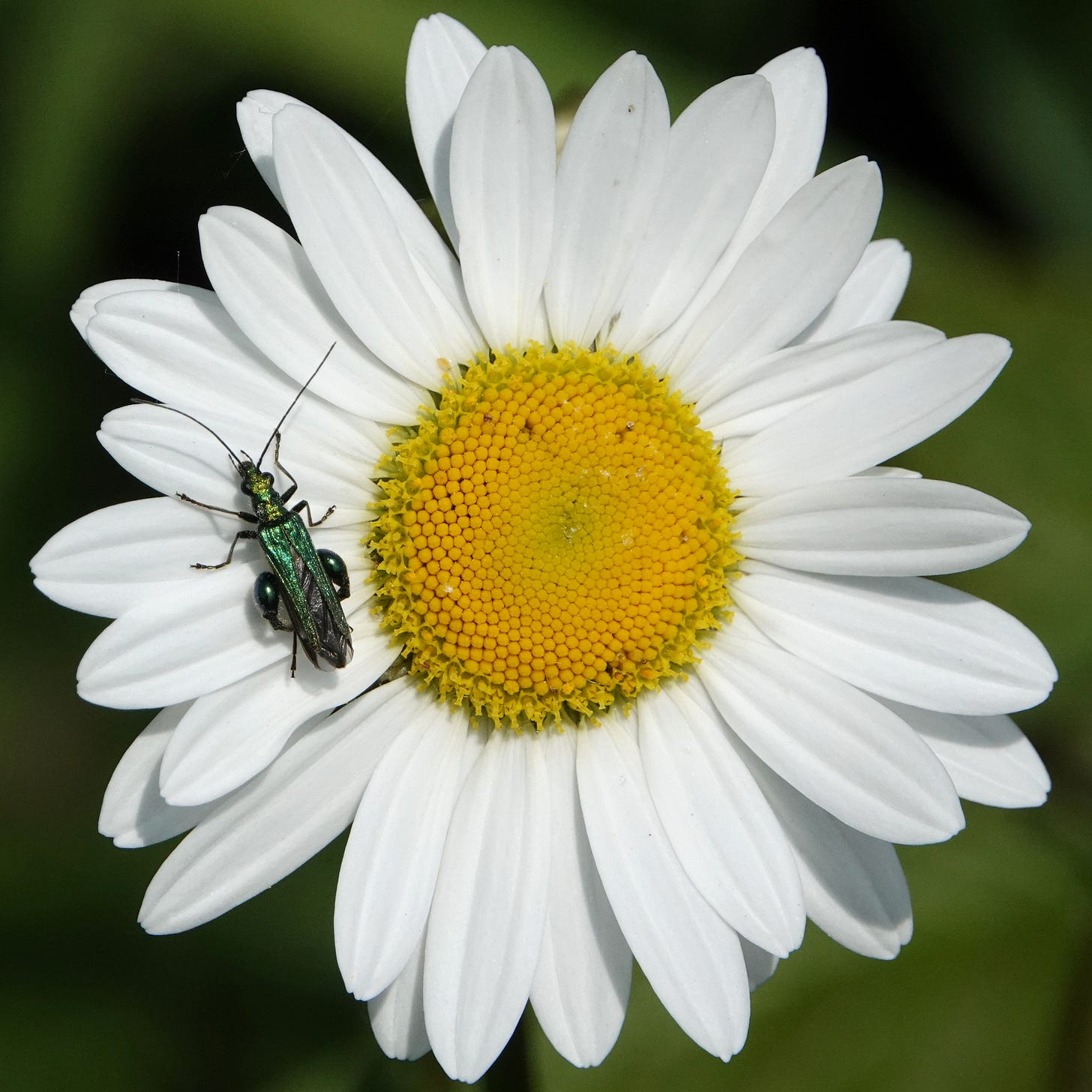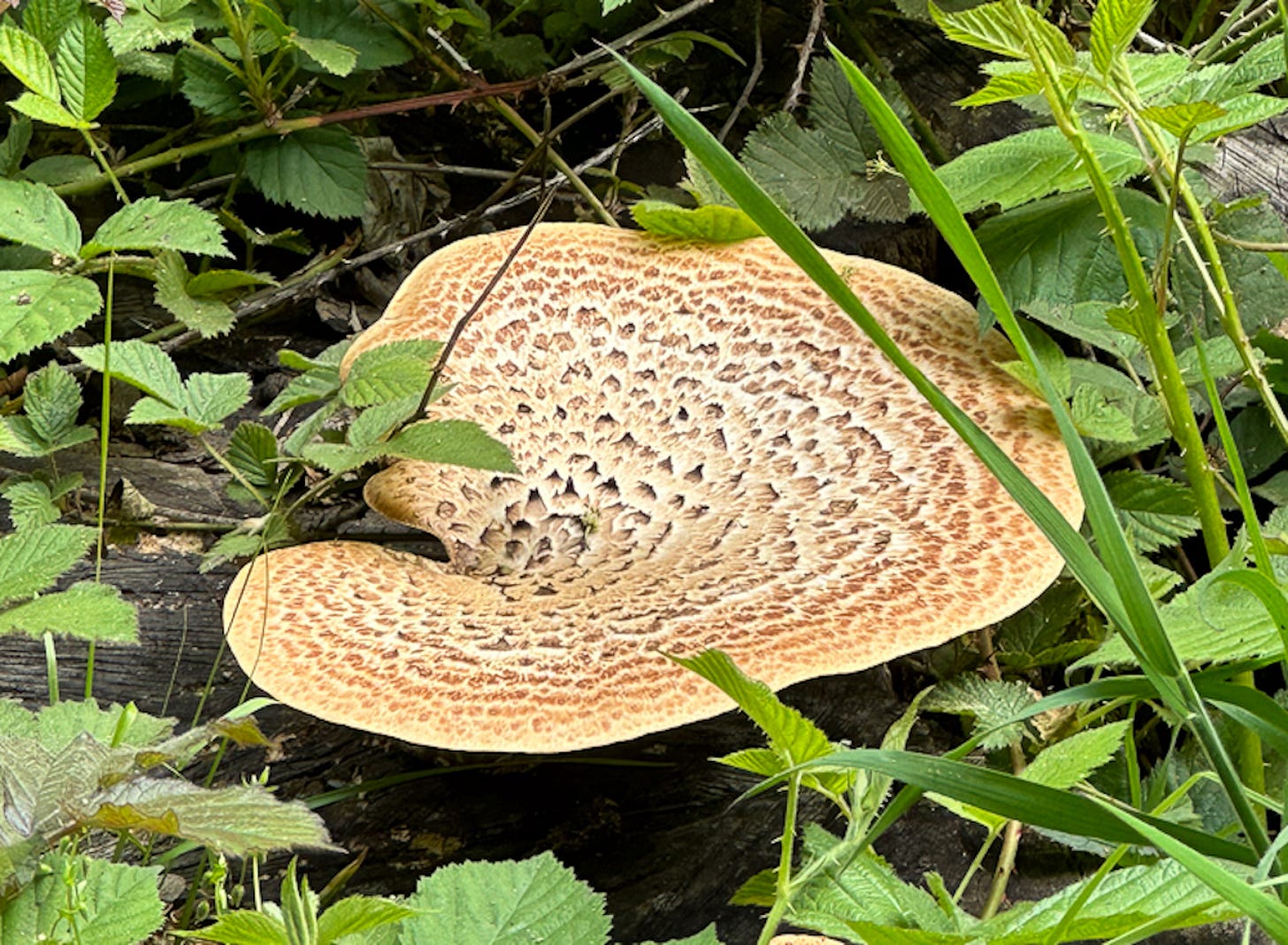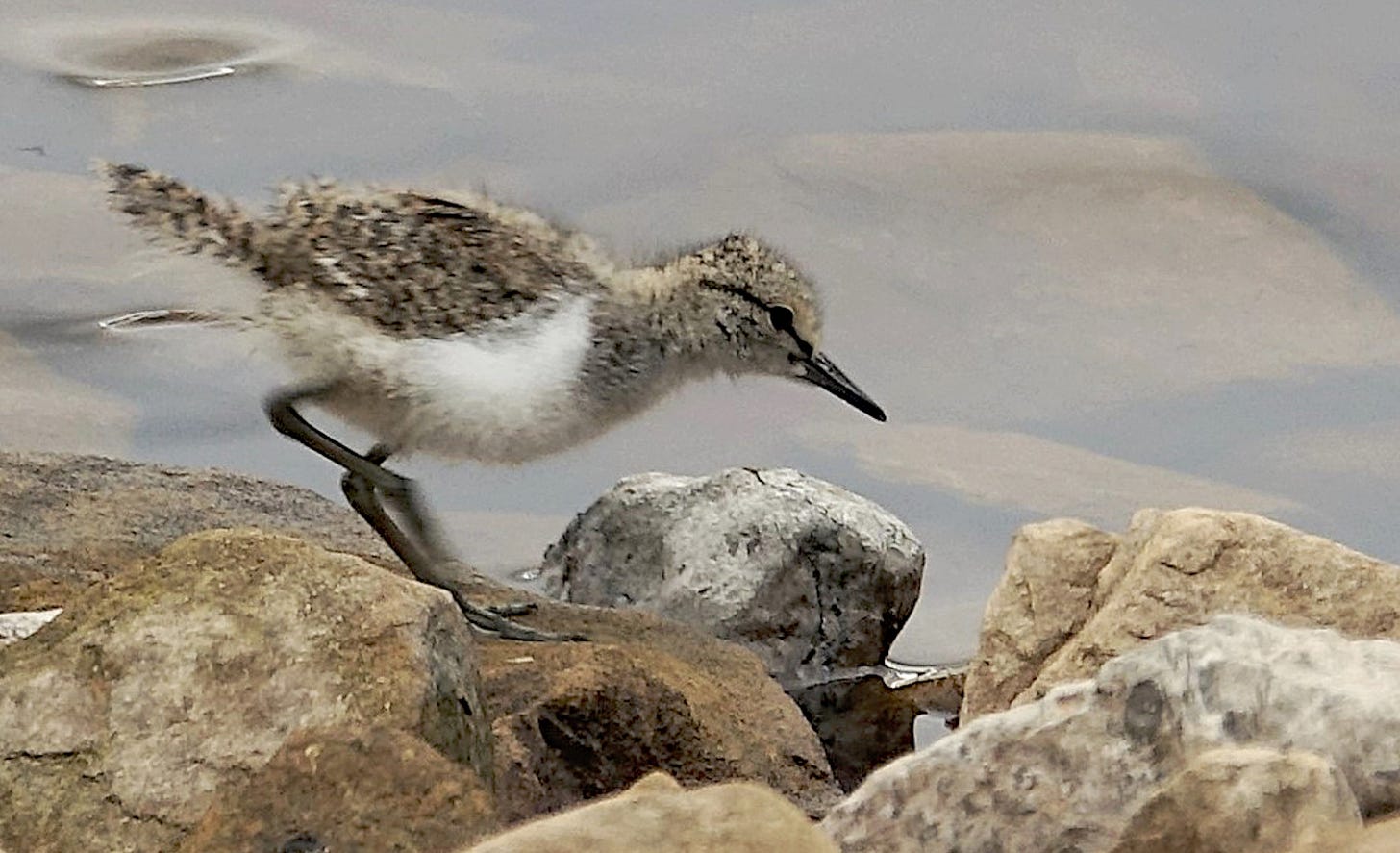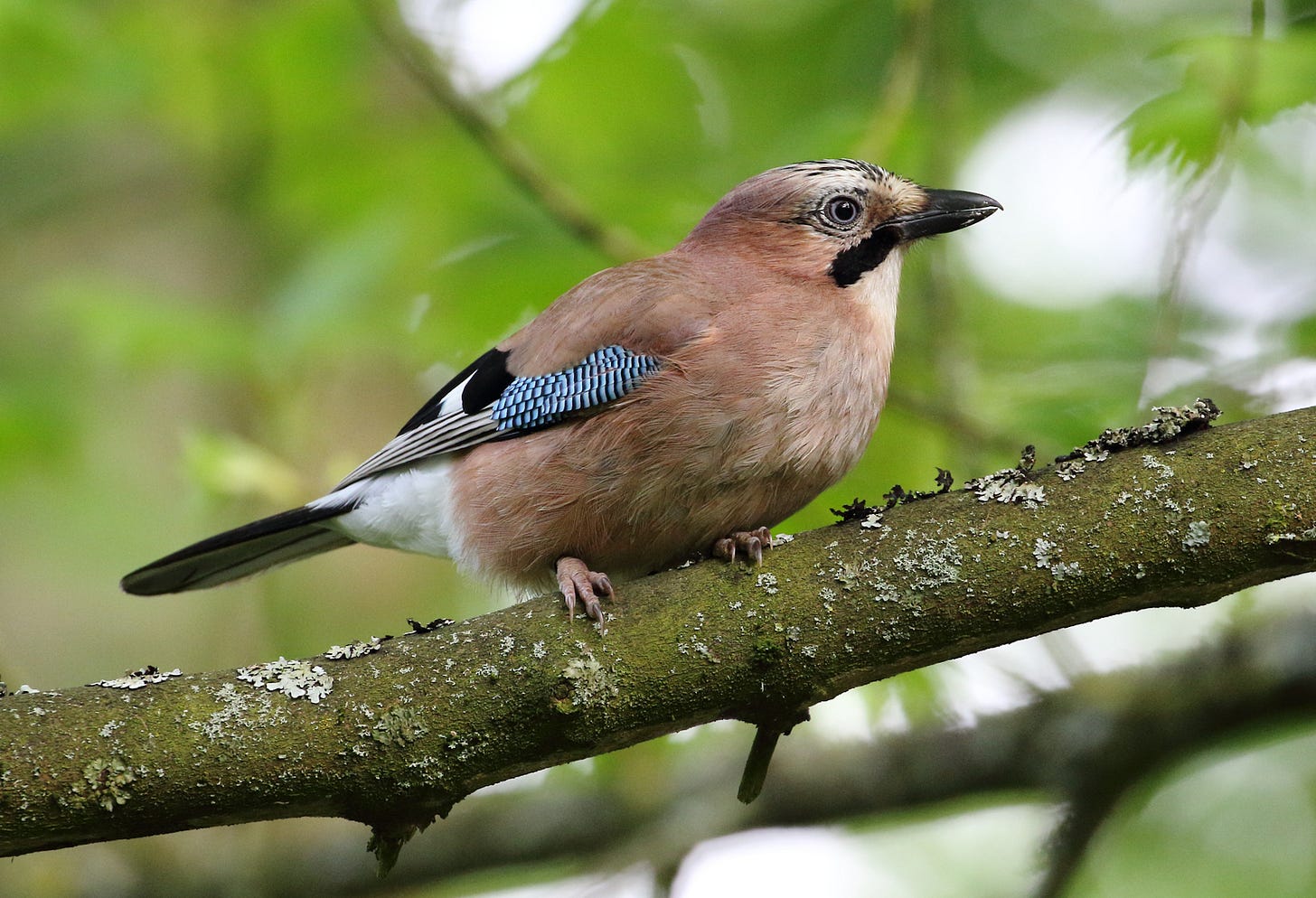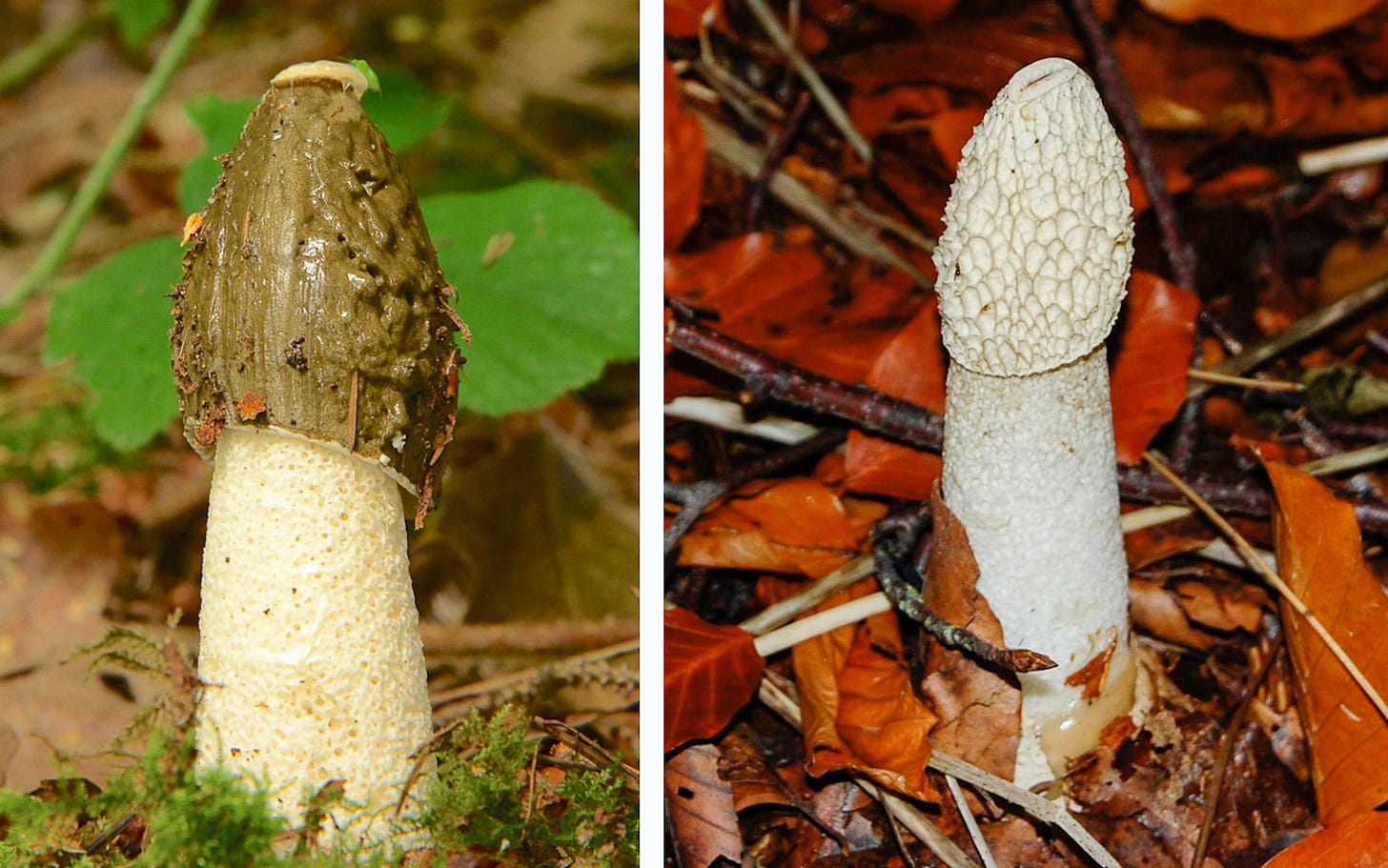What To Look For In June
Hay meadow flowers, phallic mushrooms, damselflies, Tiger Beetles and the drama and horror of baby chicks and crows
Welcome to our hand picked selection of wildlife to look for in and around the Outdoor City this month. And please, do use the comments section to say what you think and pass on any other tips about what’s out there just now.
Thanks again to the members of Sorby Natural History Society, the RSPB Sheffield Group, Sheffield Bird Study Group and Sheffield Museums for their help and expertise. And special mention to Roger Butterfield, Chris Kelly, Bob Russon, Alistair McLean and Andy Deighton for their great photos this month.
Feel free to forward this post to other people who may be interested, and do ask them to subscribe too so they get these posts straight to their inbox.
Meadow Flowers
June is the month of hay meadows (if you can still find one). These were a traditional part of English farming, where grasses and wild flowers grew side by side ready for mowing in the early autumn to prove winter fodder for livestock. Although most English hay meadows have been replaced by intensive farming now, they can still be found around Sheffield particularly in land managed by conservation charities like Sheffield & Rotherham Wildlife Trust and the National Trust.
Look out for dazzling displays of Oxeye Daisy, Cat's-ear, Meadow Buttercup and Common Sorrel along roadsides and in un-mown corners of parks and open spaces, and the Gleadless Valley has some good examples of old hay meadows still flowering wildly this month.
Green Tiger Beetle
At a top speed of 5mph, the Green Tiger Beetle is one of our fastest beetles. Watch for it chasing ants and spiders on local heathlands. A ferocious predator, with long jaws and sharp teeth, its iridescent green body, wine-red legs and large cream spots on its wing cases make it unmistakeable. About half an inch long, it warms itself up in the sun to help it run faster.
Northern Wood Ants
Northern Wood Ants, which live in Sheffield woodlands including Greno Woods and Longshaw, begin their nuptial flights around now as the summer arrives. Flying males and females emerge from their thatched nests, and mate on the wing. Newly fertilized females then return to their mother nest, gather a few workers, and march off to form a new nest.
Damselflies and Dragonflies
In June, almost all of the damselfly species found locally are on the wing. They emerge from ponds and rivers, climbing up vegetation where they shed their skin and inflate their new wings. Watch for them on ponds and slow flowing rivers on warm days.
Chaser Dragonflies can be seen from early June. The Four-spot Chaser is particularly distinctive, with its golden brown body, and conspicuous wing-spots.
Swollen-thighed Beetle
It's always worth checking large meadow flowers for insects, such as the Swollen-thighed Beetle, which is iridescent green. Photographer Roger Butterfield says: “The males have bulging femora on their hind legs, so my wife and I call them Schwarzenegger Beetles as they look like they've been pumping iron.”
Schwarzeneggers are a relative newcomer to Sheffield, formerly from southern England, they’ve now spread as far as Scotland.
Chicken of the Woods
Chicken of the Woods is a bracket fungus of deciduous woodland, mainly found on Oak and Beech. When fresh, it’s puffed up and bright yellow, but then turns paler and thinner as it ages. It was said to taste like chicken when cooked, but foragers urge caution as other more poisonous mushrooms can look similar, and Chicken of the Woods can cause stomach upsets. “It does not agree with everyone,” says the Woodland Trust helpfully.
Dryad’s Saddle
Another large bracket fungus, often growing on dead or dying Sycamore trees, although we may also see them growing on trees fallen victim to Ash Dieback, says mushrooom spotter Chris Kelly. Also known as Pheasant’s Back, the large and heavy fungus was said to look like a saddle for Dryads, or wood nymphs.
Lapwings and Waders
After being almost entirely missing for years, Lapwings are now fairly easy to find on the moors and farms west of Sheffield, with their peewit call (also another of their names) and wheeling flight. They appear black and white, but if you look closer their black feathers also contain dazzling green, bronze and purple.
Crows and Chicks
June is the month when birdsong declines and birds are busy feeding and brooding their young, says Wadsley birdlife correspondent John Robinson, so look out for newly fledged birds being fed by their parents, or wandering off to forage on their own.
Also watch for the kind of drama you don’t always see in TV nature documentaries, John adds, including the “cruel but dramatic predation of nests by Crows, Jackdaws, Magpies and Jays.” (A case in point is the chick above. Photographer Bob Russon noted that its siblings were “all predated” at Redmires this year.)
Stinkhorn
A woodland fungus that often fruits in June (from an egg-like shape in the ground) is the Stinkhorn (whose latin name Phallus impudicus links to what you all thought when you saw the pictures below).
Our fungi expert Chris Kelly notes that: “It erupts into a long polystyrene-like stem topped by a gleba which is initially covered in a sticky, dark green fertile substance which is soon removed by flies to reveal a whitish honeycomb.”
You can often locate Stinkhorns by their smell (of rotting meat, some say) before you see them. It’s said some male landowners in Victorian times would flatten the local Stinkhorns with cudgels in case they might disturb their womenfolk.
Thanks for reading. If you’re enjoying these posts, please subscribe.
If you’ve been before, a mere £4 a month will help me reach the target of at least 200 full subscribers to make this publication sustainable, with regular posts about wildlife and getting out there in the Outdoor City. Or if you’re new here, just add your email for a free trial subscription.








